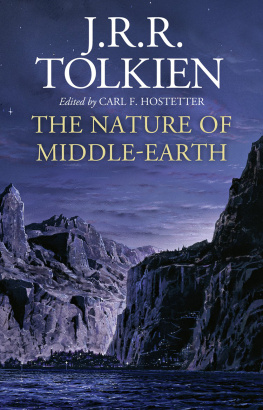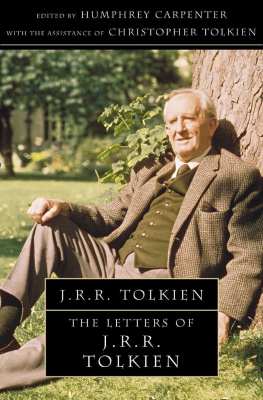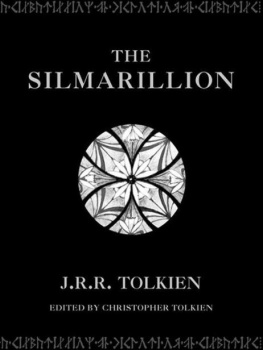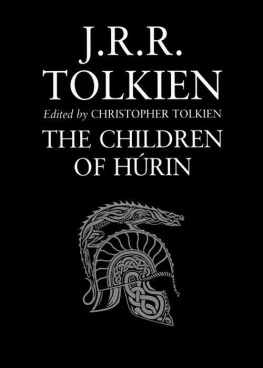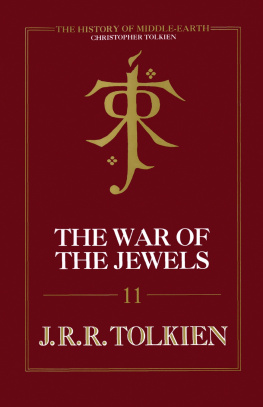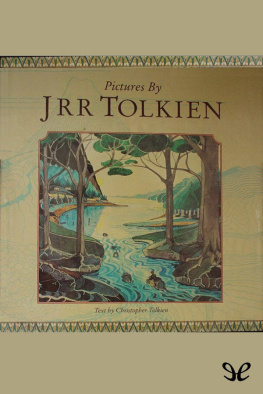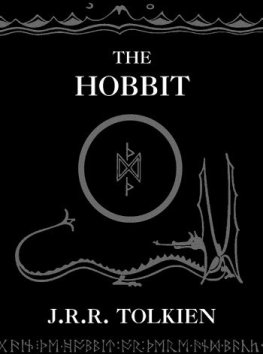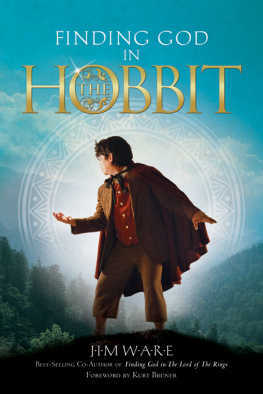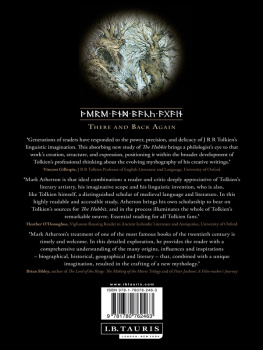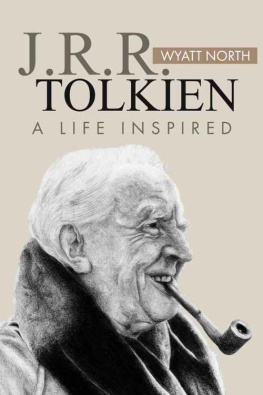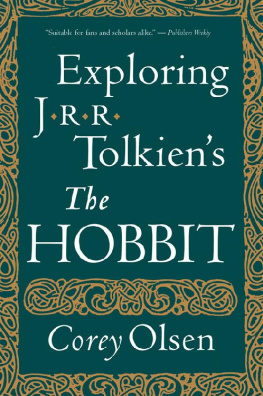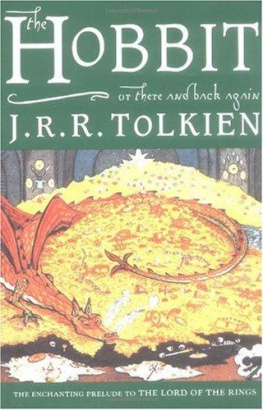J. R. R. Tolkien - The Hobbit
Here you can read online J. R. R. Tolkien - The Hobbit full text of the book (entire story) in english for free. Download pdf and epub, get meaning, cover and reviews about this ebook. year: 2009, publisher: HarperCollins, genre: Detective and thriller. Description of the work, (preface) as well as reviews are available. Best literature library LitArk.com created for fans of good reading and offers a wide selection of genres:
Romance novel
Science fiction
Adventure
Detective
Science
History
Home and family
Prose
Art
Politics
Computer
Non-fiction
Religion
Business
Children
Humor
Choose a favorite category and find really read worthwhile books. Enjoy immersion in the world of imagination, feel the emotions of the characters or learn something new for yourself, make an fascinating discovery.

- Book:The Hobbit
- Author:
- Publisher:HarperCollins
- Genre:
- Year:2009
- Rating:3 / 5
- Favourites:Add to favourites
- Your mark:
- 60
- 1
- 2
- 3
- 4
- 5
The Hobbit: summary, description and annotation
We offer to read an annotation, description, summary or preface (depends on what the author of the book "The Hobbit" wrote himself). If you haven't found the necessary information about the book — write in the comments, we will try to find it.
The Hobbit — read online for free the complete book (whole text) full work
Below is the text of the book, divided by pages. System saving the place of the last page read, allows you to conveniently read the book "The Hobbit" online for free, without having to search again every time where you left off. Put a bookmark, and you can go to the page where you finished reading at any time.
Font size:
Interval:
Bookmark:
HarperCollins Publishers
7785 Fulham Palace Road,
Hammersmith, London W6 8JB
www.tolkien.co.uk
1 3 5 7 9 8 6 4 2
This new reset edition is based on the edition
first published in 1995
First published by HarperCollins Publishers 1991
Fifth edition (reset) 1995
First published in Great Britain by
George Allen & Unwin 1937
Second edition 1951
Third edition 1966
Fourth edition 1978
Copyright The J. R. R. Tolkien Copyright Trust
1937, 1951, 1966, 1978, 1995
 and Tolkienare registered trademarks of
and Tolkienare registered trademarks of
The J. R. R. Tolkien Estate Limited
EPub Edition MARCH 2009 ISBN: 978-0-007-32260-2
All rights reserved under International and Pan-American Copyright Conventions. By payment of the required fees, you have been granted the non-exclusive, non-transferable right to access and read the text of this e-book on-screen. No part of this text may be reproduced, transmitted, down-loaded, decompiled, reverse engineered, or stored in or introduced into any information storage and retrieval system, in any form or by any means, whether electronic or mechanical, now known or hereinafter invented, without the express written permission of HarperCollins e-books.
The Hobbit was first published in September 1937. Its 1951 second edition (fifth impression) contains a significantly revised portion of Chapter V, Riddles in the Dark, which brings the story of The Hobbit more in line with its sequel, The Lord of the Rings, then in progress. Tolkien made some further revisions to the American edition published by Ballantine Books in February 1966, and to the British third edition (sixteenth impression) published by George Allen & Unwin later that same year.
For the 1995 British hardcover edition, published by HarperCollins, the text of The Hobbit was entered into word-processing files, and a number of further corrections of misprints and errors were made. Since then, various editions of The Hobbit have been generated from that computerized text file. For the present text, that file has been compared again, line by line, with the earlier editions, and a number of further corrections have been made to present a text that, as closely as possible, represents Tolkiens final intended form.
Readers interested in details of the changes made at various times to the text of The Hobbit are referred to Appendix A, Textual and Revisional Notes, of The Annotated Hobbit (1988), and J. R. R. Tolkien: A Descriptive Bibliography by Wayne G. Hammond, with the assistance of Douglas A. Anderson (1993).
Douglas A. Anderson
May 2001
The reason for this use is given in The Lord of the Rings, III, 1136.
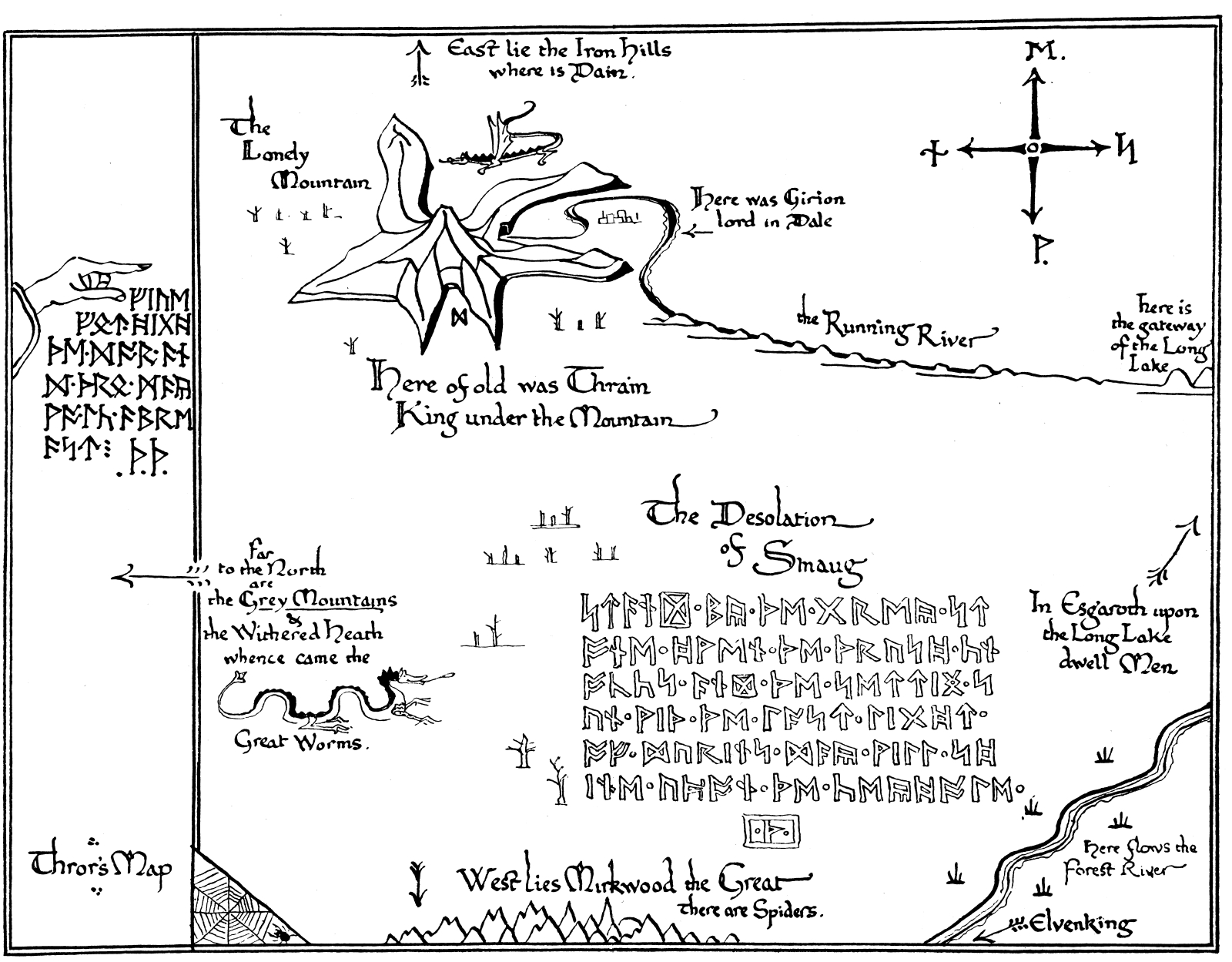

This is a story of long ago. At that time the languages and letters were quite different from ours of today. English is used to represent the languages. But two points may be noted. (1) In English the only correct plural of dwarf is dwarfs, and the adjective is dwarfish. In this story dwarves and dwarvish are used, but only when speaking of the ancient people to whom Thorin Oakenshield and his companions belonged. (2) Orc is not an English word. It occurs in one or two places but is usually translated goblin (or hobgoblin for the larger kinds). Orc is the hobbits form of the name given at that time to these creatures, and it is not connected at all with our orc, ork, applied to sea-animals of dolphin-kind.
Runes were old letters originally used for cutting or scratching on wood, stone, or metal, and so were thin and angular. At the time of this tale only the Dwarves made regular use of them, especially for private or secret records. Their runes are in this book represented by English runes, which are known now to few people. If the runes on Thrors Map are compared with the transcriptions into modern letters, the alphabet, adapted to modern English, can be discovered and the above runic title also read. On the Map all the normal runes are found, except  for X. I and U are used for J and V. There was no rune for Q (use CW); nor for Z (the dwarf-rune
for X. I and U are used for J and V. There was no rune for Q (use CW); nor for Z (the dwarf-rune  may be used if required). It will be found, however, that some single runes stand for two modern letters: th, ng, ee; other runes of the same kind (
may be used if required). It will be found, however, that some single runes stand for two modern letters: th, ng, ee; other runes of the same kind ( ea and
ea and  st) were also sometimes used. The secret door was marked D
st) were also sometimes used. The secret door was marked D  . From the side a hand pointed to this, and under it was written:
. From the side a hand pointed to this, and under it was written: 
 The last two runes are the initials of Thror and Thrain. The moon-runes read by Elrond were:
The last two runes are the initials of Thror and Thrain. The moon-runes read by Elrond were: 
On the Map the compass points are marked in runes, with East at the top, as usual in dwarf-maps, and so read clockwise: E(ast), S(outh), W(est), N(orth).

THERE AND BACK AGAIN

The Hobbit
Leaf by Niggle
On Fairy-Stories
Farmer Giles of Ham
The Homecoming of Beorhtnoth
The Lord of the Rings
The Adventures of Tom Bombadil
The Road Goes Ever On (with Donald Swann)
Smith of Wootton Major
WORKS PUBLISHED POSTHUMOUSLY
Sir Gawain and the Green Knight, Pearl and Sir Orfeo
The Father Christmas Letters
The Silmarillion
Pictures by J.R.R. Tolkien
Unfinished Tales
The Letters of J.R.R. Tolkien
Finn and Hengest
Mr Bliss
The Monsters and the Critics & Other Essays
Roverandom
The Children of Hrin
The Legend of Sigurd and Gudrn
THE HISTORY OF MIDDLE-EARTH BY CHRISTOPHER TOLKIEN
I The Book of Lost Tales, Part One
II The Book of Lost Tales, Part Two
III The Lays of Beleriand
IV The Shaping of Middle-earth
V The Lost Road and Other Writings
VI The Return of the Shadow
VII The Treason of Isengard
VIII The War of the Ring
IX Sauron Defeated
X Morgoths Ring
XI The War of the Jewels
XII The Peoples of Middle-earth
The Hobbit is a tale of high adventure, undertaken by a company of dwarves, in search of dragon-guarded gold. A reluctant partner in this perilous quest is Bilbo Baggins, a comfort-loving, unambitious hobbit, who surprises even himself by his resourcefulness and his skill as a burglar.
Font size:
Interval:
Bookmark:
Similar books «The Hobbit»
Look at similar books to The Hobbit. We have selected literature similar in name and meaning in the hope of providing readers with more options to find new, interesting, not yet read works.
Discussion, reviews of the book The Hobbit and just readers' own opinions. Leave your comments, write what you think about the work, its meaning or the main characters. Specify what exactly you liked and what you didn't like, and why you think so.

